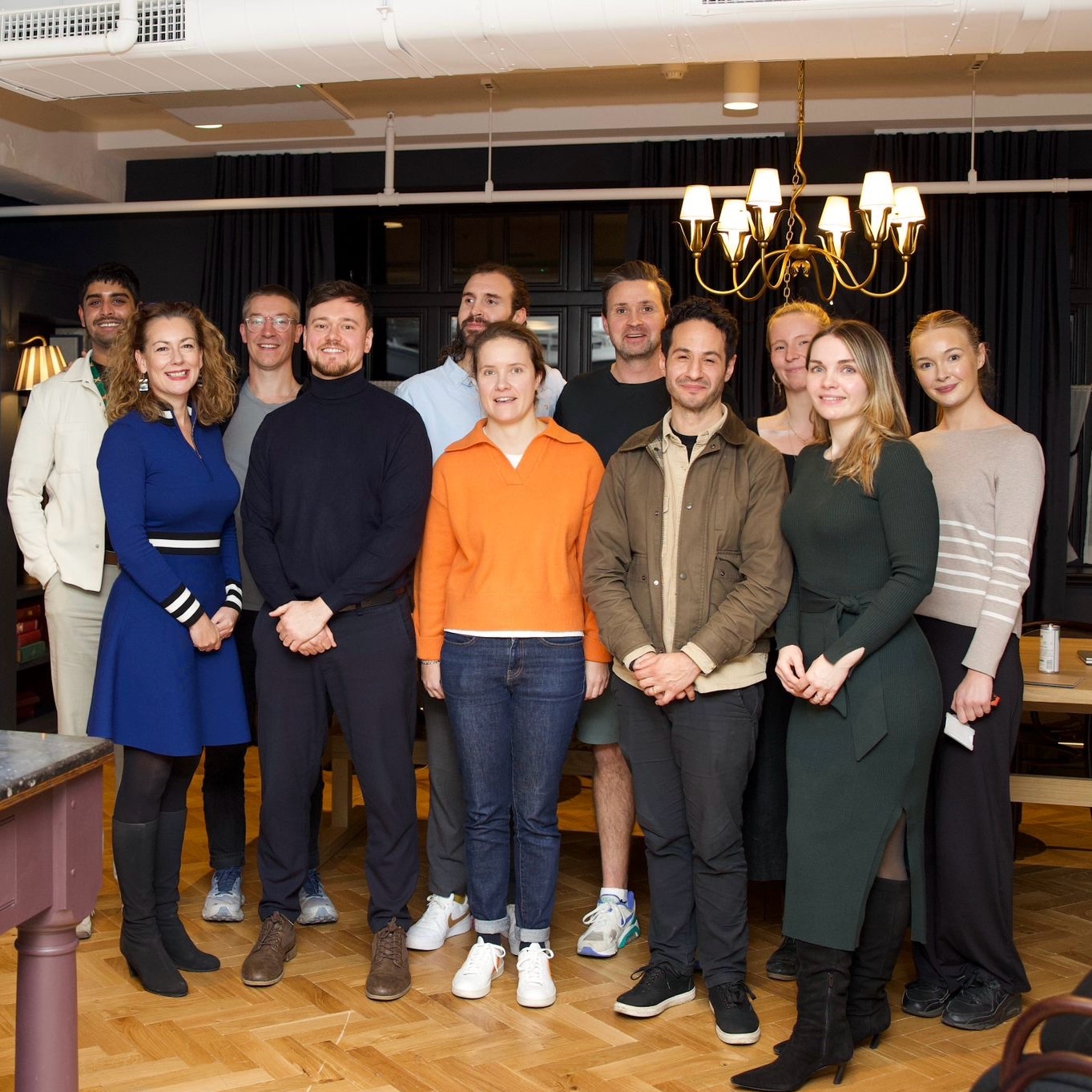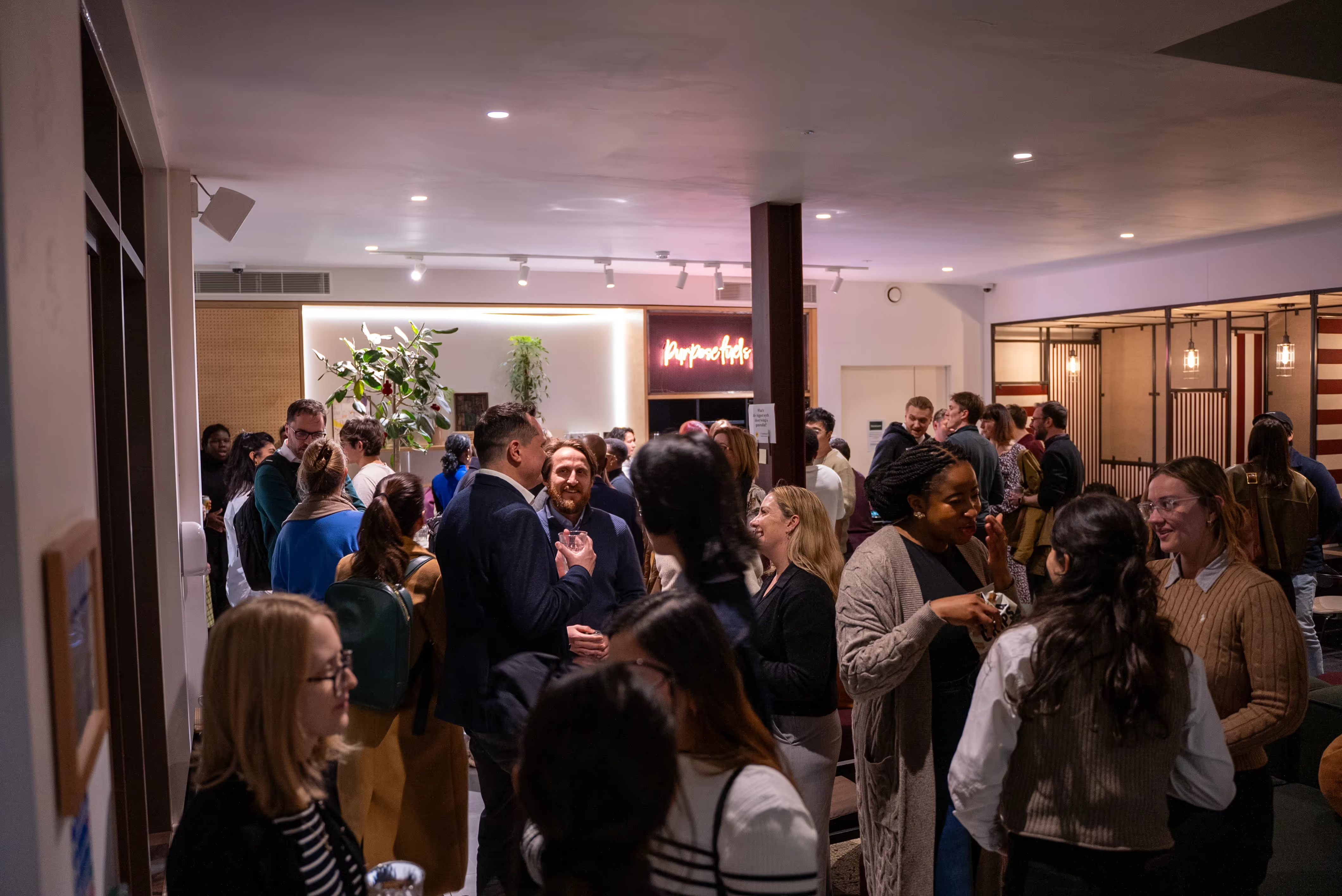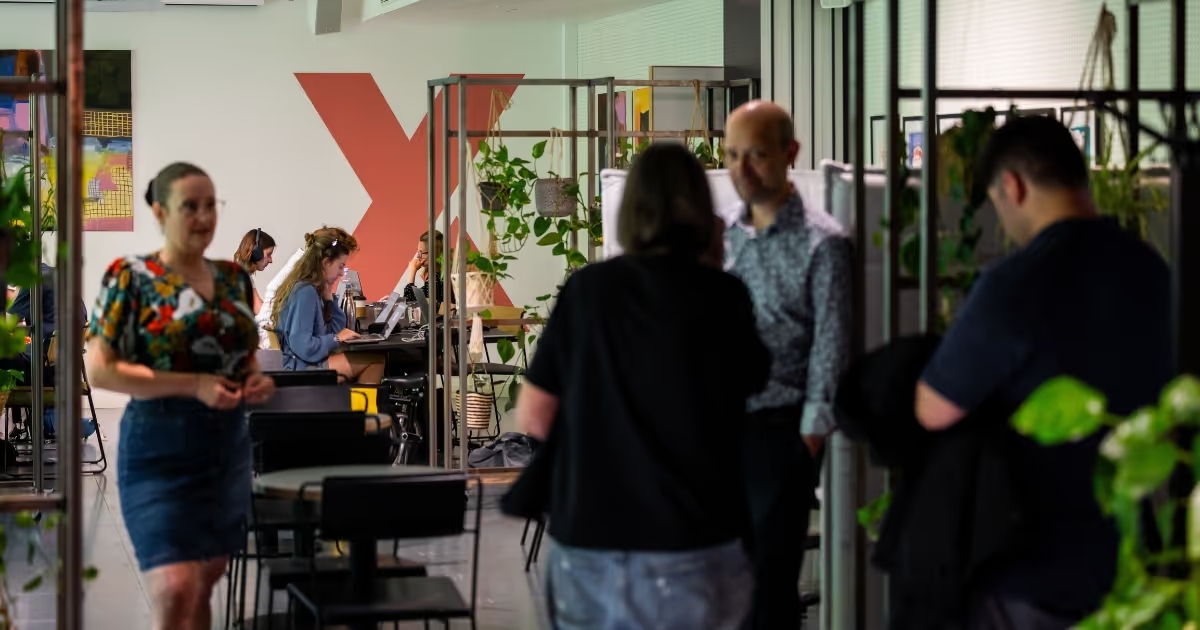Just a few short years ago, the traditional workplace was confined to one uninspiring format: fixed departmental spaces united by one common goal - to grow the business and profits at all costs. Thankfully, times are changing and the modern workspace is more flexible, autonomous and purpose-lead than ever.
Just a few short years ago, the traditional workplace was confined to one uninspiring format: fixed departmental spaces united by one common goal - to grow the business and profits at all costs. Thankfully, times are changing and the modern workspace is more flexible, autonomous and purpose-lead than ever.
{{divider}}

The Early Shared Workspace
{{divider}}
Shared workspaces have been around since the 1960s, when the OmniOffices Group created one of the oldest known co-working spaces located in Illinois. Having been ahead of their time, they recognised the creative and innovative benefits of having more collaborative open spaces, which also came at a lower cost. By 1995, the idea had started to spread, and a company called C-Base leveraged the idea for one of the first hackathons - setting up a space with the purpose of bringing technological wizards together under what they called ‘The Hackerspace’.
{{divider}}
American game designer Bernard DeKoven used the word ‘co-working’ to describe the phenomenon he called ‘working together as equals’ in a workspace. His hope was that businesses that were “isolated and hierarchical” would begin to support and be collaborative with other businesses, through a non-competitive approach, in addition to their individual projects.
{{divider}}
Quickly becoming the domain of the collaborative tech space, the 2001 ‘tech bubble pop’ accelerated conversions, with many companies looking for ways to innovate their spaces after the initial loss of both employees and clients. Shared co-working spaces helped to fill vacant space and were able to quickly attract new members. The fact that this design still exists today signifies the importance of a co-working space’s unbreakable contribution to a sustainable business environment.
{{divider}}
Gaining ground, more and more collaborative spaces began to spread across the Americas before landing in Europe, where in 2002, a quirky co-working space in a long-abandoned factory in Vienna, Austria, was labelled the ‘mother of all co-working’ spaces after its launch. This was the first of its kind in the area, and was described as a ‘community centre for entrepreneurs’. Expanding to include 3 more spaces under the umbrella of Konnex Communities, the network became one of the first chains of co-working spaces, while breathing new life into abandoned real estate in need of renovation.
{{divider}}
It was computer programmer Brad Neuberg who first brought the concept to the mother of all Tech hubs - San Francisco, in 2005. Brad’s vision was for independent and mobile workers to come together to work in a casual environment, as a reaction to ‘unsocial’ business centres which he felt were not designed to enhance productivity, community or collaborative interaction. It was called the ‘Spiral Musein: Home of wellbeing’.
{{divider}}
A Global Metamorphosis
{{divider}}
Two short years later, the term started to trend on Google, and the first Impact hub was born in London - building a global network of entrepreneurial communities focused on creating impact at scale. From there, more than 40 other co-working spaces have since been developed by the franchise network on five continents, which is the biggest network of co-working spaces as of today. 2007 was a break-out year for the co-working movement and spaces continued to open across the world, with many major media outlets starting to build awareness of the concept. ‘Co-working’ finally got its own page on the English version of Wikipedia.
{{divider}}
Eventually the concept began to morph and change shape, and variations such as the idea of the Coffice came into fruition. St Oberholz in Germany was one of the first cafes in Berlin to offer free internet access for people working on their laptops as guests. They were featured in a subsequent book called ‘We Call It Work – The Digital Bohemians or intelligent life beyond fix employments’ which was published a year later; It detailed the new form of work enabled by the internet and the first early adopters of the concept.
{{divider}}
Another variation was the creation of ‘Jelly’ in 2006. Two New York City roommates, Amit Gupta and Luke Crawford promoted occasional meetings where a small group of people came together to collaborate within an informal atmosphere. Jelly offered the opportunity to exchange ideas, with no commitments or costs. At the same time, they allowed a community to build eventually leading to the development of an institution similar to a co-working space.
{{divider}}
The Co-working VISA
{{divider}}
In 2008 the Co-working VISA was a voluntary programme that acted as a goodwill agreement between a variety of different co-working spaces, allowing members within the network to visit each-others spaces for free. There were around 160 co-working spaces world-wide by this time, and the finale at the years end was the birth of the first co-working space to encompass childcare facilities.
{{divider}}
Another global network to emerge was The Global Coworking Unconference Conference (GCUC), which successfully ran the first co-working conference, and it was quickly becoming clear that the modern co-working space would soon make the traditional office seem obsolete. In Europe, the first regional coworking conference took place at the Hub Brussels, and in 2010 the co-working movement celebrated the first ‘Coworking Day’ – signifying the anniversary of the first usage of co-working (in 2005).
{{divider}}
Corporate To Co-working
{{divider}}
It wasn’t long before larger players started to get involved. One of the Europe’s largest tourism companies TUI, with its headquarters in Hanover (Germany) experimented with their own co-working space, Modul 57'; Swiftly followed by players such as ING Bank, Network Orange, and Steelcase, who opened their own chain of ‘corporate co-working spaces’ called Workspring. Corporate clients were beginning not only to see the benefits to employees, but also finding that the flexibility offered by co-working spaces allowed them more adaptability and agility in their business models. It was a win-win all round.
{{divider}}
Vanity To Values
{{divider}}
As well as seeing improvements in productivity and work, by 2013 an increasing number of businesses were looking for more ways to deliver value to their communities, and that summer co-working Ontario launched the first health insurance plan for their members. It began to be realised that fostering communities that were holistic and integrative meant prioritising employee wellbeing, delivering value to customers and employees alike, and having a purpose beyond solely profit-driven economics.
{{divider}}
Today that concept is beginning to take hold and reach new levels, with more and more companies appealing to beliefs and values, alongside quantitative dynamics. COVID has catalysed many changes across the globe and the move to remote work and therefore shared workspaces has been at the forefront of this, with an increasing number of co-working companies delivering flexible packages to match.
{{divider}}
In just a few short decades it’s been interesting to see just how far the evolution of the modern workspace has evolved from it’s rigid origins, and it will be even more interesting to see where it leads us next.
{{divider}}





.png)
.avif)


.avif)


.avif)
.avif)



